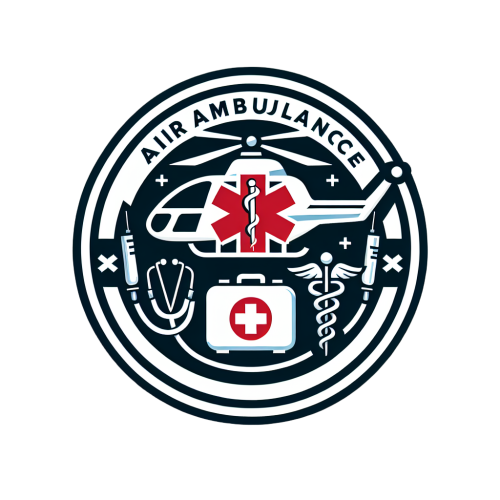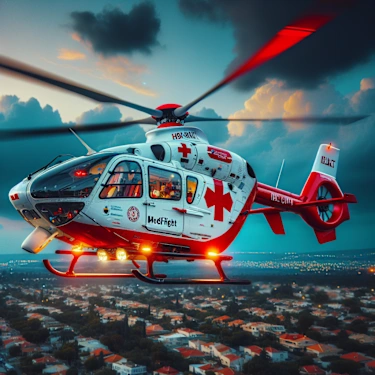medflight near me
med flight services are revolutionizing patient transport , With aviation advancements, mobile intensive care teams, including respiratory therapists, ensure that critically ill and injured patients receive timely care. Life flight operations are strategically based to enhance response times.
Find the Best Medflight Near You
When emergencies strike, every second counts.
Whether you need urgent air ambulance services or ground critical care transport, finding a dependable medflight near you can be lifesaving.
In this article, we’ll explore what medical transport entails, the types of services available, and how to choose the best provider in your area. From air and ground critical care to innovative trends shaping the future, discover everything you need to know to ensure swift, safe, and compassionate medical transportation whenever you need it.
1Fast, Reliable Medical Transport
In emergency situations, quick access to medical care can make all the difference. Searching for “medflight near me” is often the first step patients and families take when in urgent need of medical transportation.
Trusted medical transport services provide rapid response air and ground critical care, ensuring patients are stabilized and transported safely to appropriate facilities.
Local medflight providers operate with a focus on regional needs, offering immediate dispatch and expert medical teams onboard. Choosing a reputable service can reduce wait times, improve patient outcomes, and provide peace of mind during stressful times.
Modern medflight services are equipped with state-of-the-art medical equipment and staffed by highly trained personnel.
Whether it’s a helicopter ambulance or specialized ground ambulance, these services are designed to handle critical cases with precision.
Many companies also coordinate with hospitals and emergency responders to streamline patient transfers, ensuring seamless continuity of care. To find the most reliable options nearby, consider checking online directories, reviews, and official health department listings.
2. What Is Medical Transport and Why Is It Critical?
Medical transport refers to the organized process of moving patients from one healthcare facility to another or directly from accident sites to hospitals.
This can involve various modes, including air ambulances, ground ambulances, and specialized medical vans. The primary goal is to deliver timely, safe, and efficient care during patient transfer, especially in life-threatening situations.
Critical care transport services are tailored for patients requiring advanced medical interventions en route. They often include onboard ventilators, cardiac monitoring, and medication administration.
Medical transport is especially vital in rural or remote areas where hospital access may be limited, or when specialized treatments are needed promptly.
Emergency medical services (EMS) coordinate these efforts, ensuring rapid deployment of resources.
Whether it’s a sudden injury, illness, or a scheduled transfer for specialized treatment, medical transport services are an essential component of modern healthcare systems. They help save lives by bridging the gap between the point of injury or illness and the hospital.
3. Types of Medical Transport
There are primarily two types of critical care transport: air and ground. Each plays a crucial role depending on the patient’s condition, distance, and urgency.
**Air Critical Care:**
Air medical services involve helicopters and fixed-wing aircraft equipped for high-acuity cases. Helicopter ambulances are invaluable for rapid response in remote or congested urban environments. They can reach accident sites quickly, bypass traffic delays, and transport patients to specialized facilities. These aircraft are fitted with intensive care units, ventilators, and life-support equipment, staffed by pilots and medical crews trained in aeromedical transfer.
**Ground Critical Care:**
Ground ambulance services provide the most common form of medical transport. These include advanced life support (ALS) and basic life support (BLS) vehicles, tailored to the patient’s needs. Ground critical care transport is ideal for stable patients or those requiring ongoing monitoring during transfer. Modern ambulances are equipped with advanced medical devices, communication systems, and comfortable amenities for patient care.
Choosing between air and ground depends on factors like distance, terrain, patient condition, and available resources. Often, a combination of both is used to optimize patient outcomes, especially in time-sensitive emergencies.
4. Ground Critical Care Transport: When and Why?
Ground critical care transport plays an essential role in emergency medical response, particularly for patients who are stable enough for ground transfer but require advanced medical intervention en route.
It offers a flexible, accessible, and efficient means of moving patients within cities, rural regions, and between hospitals.
One key reason for choosing ground critical care transport is the ability to reach patients in locations inaccessible to air services, such as narrow alleys or congested urban streets. Additionally, ground ambulances are typically available 24/7, ensuring continuous emergency response coverage.
Patient stabilization during transfer is a priority, with medical crews providing necessary interventions, medications, and monitoring. Rapid ground response teams are trained to handle various emergencies, from trauma to medical crises like strokes or heart attacks.
They coordinate closely with hospitals to ensure seamless patient handoff and continuity of care.
In many cases, ground critical care transport acts as a bridge, stabilizing patients or preparing them for air transfer if needed. It is a vital component of comprehensive emergency medical services, ensuring no patient is left without timely medical attention.
5. Excellence in Service Area Medflight: What Sets It Apart
The hallmark of exceptional medflight providers is their unwavering commitment to excellence in service. The best medflight services distinguish themselves through experienced medical teams, rigorous safety standards, and a community-focused approach.
These providers are dedicated to delivering not just rapid transport, but also the highest quality patient care during every mission.
A trusted medical flight service employs highly trained pilots, paramedics, nurses, and physicians who specialize in aeromedical transfer.
They are skilled at managing complex medical situations, ensuring patient stability and comfort throughout the journey. State-of-the-art medical equipment onboard supports critical interventions, and adherence to strict safety protocols minimizes risks.
Community healthcare support
it is often a priority, with local providers integrating with hospitals, emergency responders, and public health agencies. This collaboration enhances response times and improves overall patient outcomes.
Additionally, transparency, compassionate service, and continuous staff training contribute to a reputation of excellence.
Choosing a medflight service with proven reliability ensures peace of mind, knowing that professional care is just a call away during emergencies or scheduled transfers.
6. How to Find Medflight Near You Quickly
Locating a medflight service close to your location can be straightforward if you know where to look. Using online search tools, directories, and official healthcare websites can help identify local options quickly.
Simply typing “medflight near me” into a search engine often yields immediate results, especially when paired with your city or ZIP code.
Many medflight providers operate regional hubs, ensuring rapid deployment. Additionally, contacting local hospitals or emergency services can provide recommendations for trusted providers in your area.
Some companies offer online chat or telehealth consultations to assist in immediate decision-making.
It’s also helpful to check whether the service is licensed and accredited by relevant health authorities, such as the FAA or regional medical boards. Verifying their response times, fleet availability, and medical team credentials can ensure you select the best option for urgent needs.
Preparing a list of nearby providers and understanding their coverage areas can save precious time during emergencies, fostering swift and effective medical responses when every second counts.
7. Benefits of Choosing Local Emergency Medical Transport
Opting for a local emergency medical transport service offers numerous advantages.
One significant benefit is faster response times—local providers are more accessible and can often reach patients more quickly than distant agencies.
Time saved during emergencies can be the difference between life and death.
Local services also tend to have a better understanding of regional healthcare facilities, enabling efficient patient handoffs and transfers.
They often provide specialized care tailored to local community needs. Additionally, local medflight providers maintain high safety standards, with rigorous training and modern equipment to ensure patient safety and comfort.
Another advantage is 24/7 availability, allowing for urgent responses at any time of day or night. This accessibility ensures patients receive prompt attention regardless of when an emergency occurs. Furthermore, local providers often foster community trust by supporting regional health initiatives and building relationships with nearby hospitals and clinics.
Choosing a nearby medical transport service ensures reliable, rapid, and compassionate care when it matters most.
8. Factors to Consider When Choosing a Medflight Service
Selecting the right medflight service involves evaluating several critical factors. First, verify the credentials and experience of the medical crew, including pilots, paramedics, and physicians.
Ensure they are trained in aeromedical transfer and emergency procedures.
Response times are crucial—check how quickly the provider can dispatch a medflight from your location. Insurance coverage and billing transparency are also important to avoid unexpected costs. Confirm whether the provider accepts your insurance plan and offers clear billing policies.
Assess the quality and maintenance of the fleet, including the availability of advanced medical equipment onboard. Technological support, such as real-time communication systems and GPS tracking, enhances safety and coordination.
Lastly, read reviews and ask for references to gauge patient satisfaction and safety records. The right medflight service combines expertise, reliability, and compassionate care, ensuring the best possible outcome when every second counts.
9. How Medflight Ensures Patient Safety and Comfort
Patient safety and comfort are at the forefront of every medflight operation. Modern medflight aircraft are equipped with sophisticated onboard medical equipment, including ventilators, cardiac monitors, and infusion pumps, ensuring continuous care during transport.
Experienced pilots undergo rigorous training to handle emergency situations and adverse weather conditions, reducing risks during flight. Clear communication systems between the cockpit, medical crew, and hospitals facilitate coordinated care and quick decision-making.
To enhance patient comfort, many services offer amenities such as climate control, noise reduction features, and comfortable stretchers or seats. Protocols for infection control, regular equipment maintenance, and strict safety procedures further safeguard patients.
By prioritizing safety alongside compassionate care, trusted medflight providers deliver peace of mind for patients and their families during the most critical moments.
10. The Future of Medical Transport: Innovations & Trends
The landscape of medical transport is continually evolving, driven by technological innovations. Telemedicine integration allows medical teams onboard to consult specialists in real-time, enhancing patient care during transfer.
Emerging drone technology offers the potential for rapid delivery of medical supplies, defibrillators, and even small payloads to remote or disaster-stricken areas, complementing traditional medflight services.
Advancements in medical equipment onboard aircraft and ambulances enable more complex interventions, increasing survival rates and patient stability. Rapid dispatch systems leverage AI and GPS to optimize response routes and allocation, reducing response times significantly.
Looking ahead, the future of medical transport promises increased safety, efficiency, and accessibility, ensuring that no patient is beyond reach when urgent care is needed.
Conclusion
Choosing the right **medflight near me** is a vital step in ensuring rapid, safe, and effective medical transportation during emergencies. Whether via air or ground, specialized critical care services provide essential support that can save lives and improve outcomes.
By understanding the types of services available, key factors to consider, and latest innovations, you can make informed decisions when quick response matters most.
Remember, reliable medical transport is more than just transportation—it’s a lifeline built on expertise, safety, and compassionate care.
When every second counts, trust a local medflight service to deliver excellence in service area medflight and peace of mind for you and your loved ones.



Trackbacks/Pingbacks